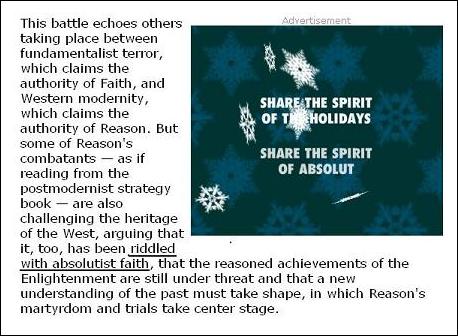See reference AR in "Binary Coordinate Systems."
See also Prewar Berlin in this journal.
See reference AR in "Binary Coordinate Systems."
See also Prewar Berlin in this journal.
“The soul of the commonest object,
the structure of which is so adjusted,
seems to us radiant. The object
achieves its epiphany.”

Above: Screenshot of today’s
New York Times obituary for
mathematician Detlef Gromoll,
known for the “soul theorem.”
Gromoll died on May 31
according to his son
Hans Christian.
From his obituary:
“Detlef Gromoll was born in Berlin
in 1938, and his childhood
was disrupted by the falling
bombs of World War II.”
Related material:
The discussion here
on June 1 of a lottery number
from the date of Gromoll’s death,
childhood, mathematics,
and prewar Berlin.
The conclusion of yesterday’s commentary on the May 30-31 Pennsylvania Lottery numbers:
Thomas Pynchon, Gravity’s Rainbow:
“The fear balloons again inside his brain. It will not be kept down with a simple Fuck You…. A smell, a forbidden room, at the bottom edge of his memory. He can’t see it, can’t make it out. Doesn’t want to. It is allied with the Worst Thing.
He knows what the smell has to be: though according to these papers it would have been too early for it, though he has never come across any of the stuff among the daytime coordinates of his life, still, down here, back here in the warm dark, among early shapes where the clocks and calendars don’t mean too much, he knows that’s what haunting him now will prove to be the smell of Imipolex G.
Then there’s this recent dream he is afraid of having again. He was in his old room, back home. A summer afternoon of lilacs and bees and
286”
What are we to make of this enigmatic 286? (No fair peeking at page 287.)
One possible meaning, given The Archivist‘s claim that “existence is infinitely cross-referenced”–
Page 286 of Ernest G. Schachtel, Metamorphosis: On the Conflict of Human Development and the Psychology of Creativity (first published in 1959), Hillsdale NJ and London, The Analytic Press, 2001 (chapter– “On Memory and Childhood Amnesia”):
“Both Freud and Proust speak of the autobiographical [my italics] memory, and it is only with regard to this memory that the striking phenomenon of childhood amnesia and the less obvious difficulty of recovering any past experience may be observed.”
The concluding “summer afternoon of lilacs and bees” suggests that 286 may also be a chance allusion to the golden afternoon of Disney’s Alice in Wonderland. (Cf. St. Sarah’s Day, 2008)
Some may find the Disney afternoon charming; others may see it as yet another of Paul Simon’s dreaded cartoon graveyards.
More tastefully, there is poem 286 in the 1919 Oxford Book of English Verse– “Love.”
For a midrash on this poem, see Simone Weil, who became acquainted with the poem by chance:
“I always prefer saying chance rather than Providence.”
— Simone Weil, letter of about May 15, 1942
Weil’s brother André might prefer Providence (source of the Bulletin of the American Mathematical Society.)
 (Photo from Providence)
(Photo from Providence)

For more on the mathematical significance of this figure, see (for instance) Happy Birthday, Hassler Whitney, and Combinatorics of Coxeter Groups, by Anders Björner and Francesco Brenti, Graduate Texts in Mathematics, vol. 231, Springer, New York, 2005.
This book is reviewed in the current issue (July 2008) of the above-mentioned Providence Bulletin.
The review in the Bulletin discusses reflection groups in continuous spaces.
2:17
“… both a new world
And the old made explicit, understood
In the completion of its partial ecstasy,
The resolution of its partial horror.”
— T. S. Eliot, Four Quartets
Speaking of horror, today’s noon entry has a link to a page that references Stephen King’s The Shining.
On a 1970’s edition of
Stephen King’s The Shining:
“The page where Danny actually enters room 217 for the first time (King builds to this moment for a long time, it’s one of the more frightening passages in the book), is precisely on page 217. Scared the crap out of me the first time I read it.”
In honor of St. Thomas Stearns Eliot, whose feast day is today, of St. Emil Artin (see entries for St. Emil’s day, 12/20/03), and of Room 217, a check of last year’s 2/17 entries leads to St. Andrea’s weblog, which today, recalling the “white and geometric” prewar Berlin of the 12/20/03 entries, has Andrea looking, with Euclid, on beauty bare.
See also my entry “The Boys from Uruguay” and the later entry “Lichtung!” on the Deutsche Schule Montevideo in Uruguay.
White, Geometric, and Eternal
This afternoon's surfing:
Prompted by Edward Rothstein's own Fides et Ratio encyclical in today's NY Times, I googled him.
At the New York Review of Books, I came across the following by Rothstein:
"… statements about TNT can be represented within TNT: the formal system can, in a precise way, 'talk' about itself."
This naturally prompted me to check what is on TNT on this, the feast day of St. Emil Artin. At 5 PM this afternoon, we have Al Pacino in "The Devil's Advocate" — a perfect choice for the festival of an alleged saint.
Preparing for Al, I meditated on the mystical significance of the number 373, as explained in Zen and Language Games: the page number 373 in Robert Stone's theological classic A Flag for Sunrise conveys the metaphysical significance of the phrase "diamonds are forever" — "the eternal in the temporal," according to Stone's Catholic priest. This suggests a check of another theological classic, Pynchon's Gravity's Rainbow. Page 373 there begins with the following description of prewar Berlin:
"white and geometric."
This suggests the following illustration of a white and geometric object related to yesterday's entry on Helmut Wielandt:

Figure 1
(This object, which illustrates the phrase "makin' the changes," also occurs in this morning's entry on the death of a jazz musician.)
A further search for books containing "white" and "geometric" at Amazon.com yields the following:

Figure 2
From Mosaics, by
Fassett, Bahouth, and Patterson:
"A risco fountain in Mexico city, begun circa 1740 and made up of Mexican pottery and Chinese porcelain, including Ming.
The delicate oriental patterns on so many different-sized plates and saucers [are] underlined by the bold blue and white geometric tiles at the base."
Note that the tiles are those of Diamond Theory; the geometric object in figure 1 above illustrates a group that plays a central role in that theory.
Finally, the word "risco" (from Casa del Risco) associated with figure 2 above leads us to a rather significant theological site associated with the holy city of Santiago de Compostela:

Figure 3
Vicente Risco's
Dedalus in Compostela.
Figure 3 shows James Joyce (alias Dedalus), whose daughter Lucia inspired the recent entry Jazz on St. Lucia's Day — which in turn is related, by last night's 2:45 entry and by Figure 1, to the mathematics of group theory so well expounded by the putative saint Emil Artin.
"His lectures are best described as
polished diamonds."
— Fine Hall in its Golden Age,
by Gian-Carlo Rota
If Pynchon plays the role of devil's advocate suggested by his creation, in Gravity's Rainbow, of the character Emil Bummer, we may hope that Rota, no longer in time but now in eternity, can be persuaded to play the important role of saint's advocate for his Emil.
Update of 6:30 PM 12/20/03:
Riddled:
The Absolutist Faith
of The New York Times

White and Geometric, but not Eternal.
Powered by WordPress